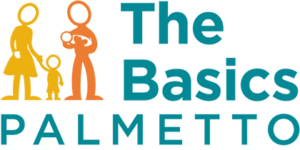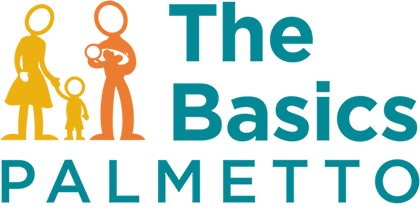Building early math skills doesn’t have to be one more thing you need to do as a parent or caregiver. There are endless ways to make numbers and problem-solving part of everyday life with young children. Here are 3 simple ideas for weaving math into your daily rhythms!
1. Math in the kitchen
Measuring. Even if your young childr doesn’t understand the concept of numbers, you’re teaching them that numbers are part of everyday life. Young children love to scoop and pour, so you’re encouraging math skills in a way that’s a naturally fun activity for them.
Stir something a certain number of times.
Use “math words” as you cook. “The bag of flour is heavy.” “A teaspoon is smaller than a tablespoon.”
Stacking or nesting plastic containers teach young children about patterns and special reasoning (understanding location, direction, position.)
If you have a kitchen scale, they can measure ingredients and talk about which one is heaviest.
2. Math in the bath
Teach comparisons such a big, small, heavy and light. Having simple toys in the bathtub, such as plastic cups, is a fun way to do this. Simple conversations like these may not seem like math, but they are.
“Which cup is big and which cup is small?”
“Pour the cup from up high. Now pour the cup from down low.”
“When you fill the cup with water, does it get heavier? When you dump the water out, does it feel lighter?
Talk about shapes, colors, and sizes of bath toys.
Use words like over, under, down, up during bathtime. “I’m going to pour the water down your back to rinse you off.” Or “Look up as I rinse your hair.”
3. Math during read-aloud time

Build early math skills during read-aloud time! There are lots of great books that cover counting, shapes, patterns, and colors but within the form of a story. Here are some of our favorites that can be found at your local library.
Mouse Count by Ellen Stoll Walsh: Children love this delightful story that introduces counting in a tale of a greedy snake and how the mice he caught to eat escaped.
Changes, Changes by Pat Hutchins: This book tells the story of a wooden family living in a house of blocks. Whenever a problem occurs, they must come up with a shape-based solution.
The Very Hungry Caterpillar by Eric Carle: This children’s classic follows a very hungry caterpillar and children love to count the foods as you read the story.
Chicka Chicka 123 by Bill Martin & Michael Sampson: 101 numbers climb up the apple tree and wonder if there will be “a place for me.”
A Color of His Own by Leo Lionni: A heartwarming book about a chameleon, colors, and companionship.

Here are some resources that can help you on your journey:
- Watch this short video for encouraging ways that real parents count, group, and compare with their little ones.
- Visit the Count, Group, and Compare page and click on the tips at the bottom of the page for Infants 0-12 months and Toddlers 12-24 months.
- Receive regular, FREE resources from The Palmetto Basics.
- Follow The Palmetto Basics on Facebook and Twitter. We provide encouraging, real-life, shareable content to help parents and caregivers!
If you, your faith community, your organization, or your place of business would like to join us as a Champion for Children, contact us! palmettobasics@gmail.com.
Thanks for sharing this post and spreading the word about The Palmetto Basics to those within your circle of influence!

